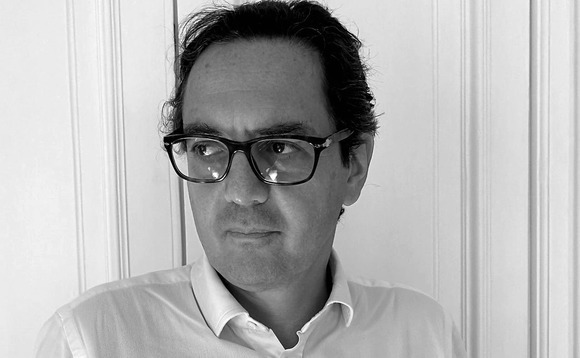
Q&A: Alto Partners' Raffaele de Courten

Alto Partners founding partner Raffaele de Courten speaks to Alessia Argentieri about fundraising, dealflow and debt facilities in the Italian market
Alessia Argentieri: Alto Partners recently held a €210m final close for its new vehicle, Alto Capital IV, a fund dedicated to the Italian mid-market. It raised a significantly larger amount of capital than its €100m predecessor. How was the fundraising process?
Raffaele de Courten: Despite being delayed by a few months due to the political uncertainty created by the Italian elections, the fundraising was relatively fast and smooth. We had a very positive response from both Italian and international investors and decided to close the subscription process after hitting our hard-cap earlier than expected. The fund received commitments from 70 LPs, including pension funds, bank foundations, banks, family offices, funds-of-funds and private investors. Around 45% of the capital raised came from non-Italian LPs, which is an important achievement for an Italian mid-market fund. At the same time, Alto Capital IV received strong support from existing Italian LPs, which re-upped with increasing commitments.
AA: What are the main obstacles that an Italian mid-market fund like Alto Capital IV currently encounters in the fundraising process?
RdC: The largest part of the LP base for an Italian mid-market fund is composed of local investors, since the relationship-building process is very fluid due to the shared language and culture. However, it is more difficult to attract interest from international LPs that are historically less exposed to the Italian economic landscape. Despite being easier to approach and get involved in the fundraising, Italian LPs represent a young market that often lacks in responsiveness and is burdened by excessive internal procedures. Therefore, for a GP that mainly operates in Italy, this environment presents some risks and requires a carefully planned and effective pre-marketing phase in order to be successful once the fundraising officially begins.
AA: The Italian PE market has flourished in the first semester of the year. What are the main factors behind this trend?
RdC: The Italian PE market is currently benefiting from a pick-up in the economy, excellent performance of export-led SMEs, attractive acquisition opportunities with multiples that are lower compared to other countries, and bank leverage that is accessible and abundant. The number of PE players in Italy is relatively small, while the dealflow is extremely rich and composed of well-performing high quality businesses.
On the other hand, a market where 80% of companies are family-owned SMEs presents some drawbacks, especially in terms of negotiation length and lack of balance sheet transparency. Furthermore, there are several factors that need to be assessed within the Italian PE landscape, primarily the lack of a liquid secondary market between PE funds, the shortage of funds-of-funds, and the persistent political instability that may ultimately affect investors' confidence and discourage international LPs.
AA: What type of return do you expect in this vibrant market?
RdC: Alto Partners' investment approach is traditionally conservative in pricing and in the use of leverage, and our expected returns are mainly based upon company growth. On average we expect to realise a money multiple of 2-3x for each investment, to be achieved over a four- to six-year timeframe. The sectors where we achieve the greatest returns are niche food, high-end mechanics and electro-mechanics, luxury, design and fashion, services, and more recently natural cosmetics and food supplements. The companies we target have a diversified customer base, a history of profitability, consistent cash flows, strong and motivated management teams, and a flexible cost structure. For these types of businesses, PE can be a powerful tool to accelerate ownership transition and unleash their unexpressed growth potential.
AA: How easy is it to find leverage financing in a market where the lending landscape has been almost exclusively dominated by a few large banks?
RdC: Despite the dominance of two very large leading banks in Italy – Intesa Sanpaolo and Unicredit – there are also several smaller banks that are very active in leverage finance, especially at a local level, and can be more effective at supporting medium-sized buyout transactions. Since we mostly work with family businesses, we need to keep the investment structure as simple as possible. Therefore, we typically use senior bank debt coupled with, wherever applicable, a loan provided by the vendors themselves. This simple financing structure allows a smoother negotiation of the deal and leaves more time to spend on company strategy rather than on the deal's financial engineering.
Latest News
Stonehage Fleming raises USD 130m for largest fund to date, eyes 2024 programme
Sponsor acquired the public software group in July 2017 via the same-year vintage Partners Group Global Value 2017
Stonehage Fleming raises USD 130m for largest fund to date, eyes 2024 programme
Czech Republic-headquartered family office is targeting DACH and CEE region deals
Stonehage Fleming raises USD 130m for largest fund to date, eyes 2024 programme
Ex-Rocket Internet leader Bettina Curtze joins Swiss VC firm as partner and CFO
Stonehage Fleming raises USD 130m for largest fund to date, eyes 2024 programme
Estonia-registered VC could bolster LP base with fresh capital from funds-of-funds or pension funds









